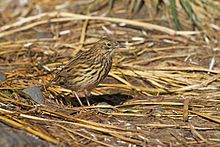A Robert Sinyoka woman who was experiencing sleepless nights after a grey bird was sent from Tamandayi to demand payment of a debt she failed to pay as per stipulated time has died.
Theresa Mguni 38, who was a cross border trader and operator of five flea market bays in and around Bulawayo, died at her rural home after a struggle with trauma from a bird that kept her on her toes day and night.
Pastor Solomon Ncube of Christ for All Ministries told ZimEye.com that they tried to assist Theresa but she did not commit herself to God opting to go to fake prophets who told her confusing and conflicting advice that haunted and caused her death.
Mguni met her fate after she travelled to South Africa last year to buy stock for her business, and this led to the beginning of the troubles that have been triggering shivers in her spine countless times.
According to her elder Sister Thembekile, the Cross-border trader died last week and was buried in the same village. “We are still worried if this war is over, as we do not know what to do if the saga continues,” she told ZimEye.com off the camera.
Theresa was from SA to buy goods, when she stole bags which were packed with material for sale from across the border and sold the order before a dream came to her ordering her to return what “she stole”.
The late Mguni told ZimEye.com before her death that, the dream kept coming until she sought divine intervention from prophets who warned her to look for the owner of the goods she had embezzled previously.
“I went back to Beit- Bridge and tried to look for the owners but that was to take me to another journey into the deep jungle in search of the owners of the goods I took. I am regretting the day I picked up what did not belong to me,” said Mguni in our previous interview.
She also told ZimEye.com that she went to a village where she was directed by prophets and came across an old man in his 70s. She was told by the old man that he was waiting for her arrival weeks ago to return the stolen goods.
She was ordered to enter into a mutual agreement of paying the said amount which was calculated to $800 and she agreed.
According to Mguni before her death, sekuru gave her a small root that she said ‘I must take to SA and do another order and that the orders will double the charge he demanded’. The goods that Mguni took were also valued at $400 and she was to repay her debts money and also another $400 to sekuru.
Mguni went to SA and did what she was told to do and the deal went well, that she managed to acquire $1600, which she squandered and delayed to return to sekuru with the payment for both her victims and the old man.
A few days after she squandered the cash, in the morning when she was taking a bath, a bird arrived from nowhere and greeted her in the bathroom and it introduced itself as sekuru Nyandima.
Asked to shed more light about the bird, she told ZimEye.com that the bird was still coming every time she is at her lodgings, a situation that fueled her death, before settling the debt.

















